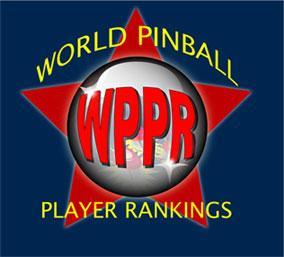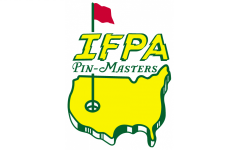Guide to WPPR 5.0 – Making Your Event Count
 blog post courtesy of Bob Matthews
blog post courtesy of Bob Matthews
CLICK HERE FOR GERMAN TRANSLATION
The new WPPR system presents a challenge for tournaments that want to obtain full value. Not all events can or should seek full value; your tournament’s goals are your own to choose. If high value is one of them, though, here’s an overview of various current formats, what happens to them under WPPR 5.0, and some options for change. This does NOT address the need to have 64 players for full value; here, I’m just looking at the factor for the Tournament Grade Percentage [TGP] to be applied to your event and how to get the most out of it.
Single Elimination Match Play
Unless you’re doing best-of-5 or best-of-7, this format will not get full value for typical size fields. Even a 64-player field, playing best-of-three, only grades out to 72%. Basically, it’s not the format to use if full value is a goal. If you combine it with a qualifying phase prior to match play, that might work.
Double Elimination Match Play
This format fares well. A double elimination event with best 2-of-3 in both winners and losers bracket will grade out full with 9 or more players. Events with 2-of-3 winners and a single game in the losers’ bracket will grade out full with 33+ players and at 96% with 17+ players.
Two Strikes
If it’s one game, one strike, then no tournament yet held would get 100%. You need 65+ people just to get to 60%. Two strikes only grades full for typical size fields when it’s best 2-of-3. In that case, just 9 players gets you there.
Three Strikes
Three strikes is almost always done as single game, not best-of-3, due to how long it takes in the latter case. Best 2-of-3 grades out full for just 5 players, while single game doesn’t grade full until you reach 129.
HERB-style Qualifying plus PAPA-style Playoffs
First, note that HERB or any other unlimited qualifying format will not reach 100% unless at least 20 hours of qualifying takes place. This is because the new method only gives 80% value to the games played [GP] factor in these cases.
The most common versions of unlimited qualifying grade out in the 50-90% range. Most HERB events use 4-9 machine scores, 2 or 3 rounds of 3-game PAPA-style playoffs, and at least 12 hours of qualifying. That works out to 10-18 games played, or 40% to 72% value. Add the 12% to 20% for hours of qualifying and you get 52% to 92% total.
Since most events of this type have chosen their playoff format to accommodate their schedule, it will often be impractical to increase the number of playoff games to raise the TGP value. Tournament directors then have two primary choices to improve value: change the playoff format to get more games played in the same number of available hours, or count more of the qualifying games towards making the playoffs.
Counting more qualifying games is easy; just take a player’s best 2 scores on each machine, or best 10 results across all machines, things like that. [I would suggest limiting the number of best scores taken to 2 or 3 per machine; it wouldn’t do to have someone make the playoffs by having the top 10 scores on just one machine!] For those using software, it would need to be rewritten, but that’s doable.
Let’s look at the other option, playoff formats, with respect to the time needed. PAPA-style playoffs take about twice as long for the same number of “games played” as regards TGP as does match play. It’s simple math: if there a 4 players in a PAPA playoff group and an average game played takes N minutes, it takes 4N minutes to get one value game played in PAPA game. In match play, with 2 players, the same value game played requires only 2N minutes. So you can roughly double your GP with the switch to ether single or double elimination match play.
HERB-style Qualifying plus Match Play Playoffs
As long as the match play is double elimination best 2-of-3, this will make it to full value with even 4 machines used if 8 people or more are in the playoffs. For single elimination, match play is worse off than PAPA-style if it’s single game. If the matches are best 2-of-3, single elimination match play adds 3 games played compared to PAPA-style. So if you take 16 to the playoffs, [or take 12 with the top 4 getting byes], you can just make it to 100% if you have 20+ hours of qualifying and count 8 or more qualifying games:
20% for20 hours qualifying
32% for 8 qualifying games played
48% for 12 playoff games [4 match play rounds of 3 games each]
Limited Qualifying plus Match Play
Like HERB, most limited qualifying events use 4-9 machine scores, for 16% to 36% value. With no hours value, most of the total value comes from the playoffs. For the single elimination format commonly used with limited qualifying, a large number of rounds using best 2-of-3 is needed. For 4-6 machine scores, you’d need to take 65+ players to the playoffs, so the total field would need to be 130+ players to meet the 50% reduction rule. For 7-9 machines scores, you need to take 33+ players to match play and have a beginning field of 66+.
PinGolf
Pingolf alone needs 25 holes to work, regardless of whether the holes are in qualifying or playoffs [so long as the playoffs, if any, cut the field by at least 50%]. PinGolf as qualifying followed by other playoff formats works so long as the playoffs add enough value:
18-hole PinGolf plus PAPA-style makes it with 3 rounds of 3-game PAPA playoffs; 2 rounds of playoffs get you to 96%.
18-hole PinGolf plus single elimination match play works for best 2-of-3 playoff matches with 5+ people in the playoffs.
9 hole PinGolf plus double elimination best 2-of-3 works for 5+ players.
Disclaimer
I’ve tried to be as accurate as possible here, but in the end, the IFPA staff make the final determination as to an event’s value. If you have any questions about your event’s value, you should probably contact IFPA before your event’s final rules are announced. Thanks, and I hope I’ve helped.











































Wow. This is exactly the kind of info I was wanting on the new system. Thanks, Bob!
How does unlimited match play compare (no qualifying, no knocklout)? For a recent tournament we had 34 players doing 16 rounds (1 match each round taking a total of 6 hours) with 18 machines available.
16 games played = 64% TGP x 17 base points for 34 players
10.88 net base value
How would limited qualifying with 36 players followed by top 16 double elimation tournament best 2 out of 3 games both brackets fair?
Normally it would depends on what your “limited qualifying” consists of, but your finals format is more than enough games to grade out well.
A top 16 double elim tournament with best 2 out of 3 matches is 9 round of 3 games each, which would be enough games for your TGP to be 100%.
Net base value for 36 players using this format would be 18 WPPR points.
With the new system, will there be a way that the IFPA site could show what the estimated WPPR points would be if like a standard “x” # of players were in it? just so people could see how many WPPRs might be up for grabs at a tourney based on entrants?
I believe we’re going to try and have a ‘projected TGP’ as part of the listing on the IFPA calendar, just so players can get a sense of what kind of value to expect based on the format.
We’re going to be pushing hard for the information section of the tournament entry to be filled in with as much detail on the format as possible, since that now directly impacts the value of the event.
Currently our most popular submission includes “Format TBD” in the information section . . . which won’t fly for 2015 calendar entries.
ok my brain is about to explode. if there a way to dumb all of this 5.0 info down? maybe even a video tutorial or something? im sure im not the only one running a league that could benefit from some simplified info on this 🙂
Here’s the easiest way to dumb 5.0 down:
Step 1 –> Count the number of participants, and divide by 2
Step 2 –> Count the number of games of pinball you’ll play at the tournament/league, and multiply by 4% (Can’t go greater than 100%)
Step 3 –> Multiply your answers from Step 1 and Step 2 together
Example from our Chicago League
Step 1 –> We have 36 players, so this would be 18
Step 2 –> We play 6 months, 5 games per month, so 30 games X 4% = 120%. This is over 100%, so the answer here is 100%
Step 3 –> 18 X 100% = 18 points
THE END 🙂
One important difference to keep in mind is that leagues usually count ALL games played, whereas tournaments often count only the BEST game you played on a given machine if there’s a qualifying phase. Counting the number of games played only works when all games actually count! For formats with best-of-X-games or Y-strikes, we use the maximum number of games anyone might have to play to win. It’s possible for fewer games to actually be played if some matches only go the minimum, but that’s not worth the trouble to track.
If your brain is in danger of exploding, please consult TWD to see if any of the zombies would care to consume the remnants.
Ahh ok! That helps. Thanks Josh!
JoshSharpe
So it will not be worthy to have weekly or monthly events fo a league, but put all of them together and just get a final standing at the end of the year, right?
The more data used in determining the result, the higher the TGP will be.
We do anticipate many weekly/monthly events grouping together results over the course of multiple meetings in order to accumulate a more significant number of games played.
JoshSharpe
Thanks Josh
Wonder if the system is still the same as when this was posted. I’m certain that the IFPA would have enough time to polish this formula will make it easy to understand how WPPR points will be for a specific number of players.